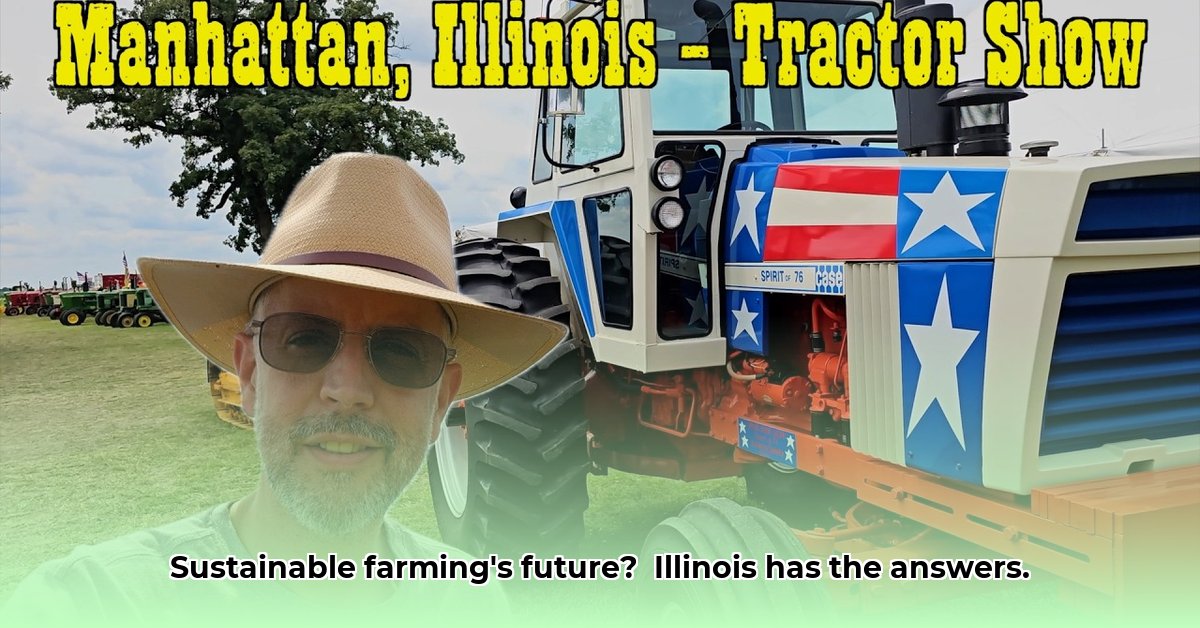
The Illinois Tractor Show isn't a single event but a vibrant tapestry woven from the threads of agricultural history and the ambition of sustainable farming. Two prominent threads stand out: Historic Farm Days (HFD) and Half-Century of Progress (HCP). These shows, while vastly different, both offer invaluable insights into Illinois's agricultural past, present, and future. This comparative analysis explores how these events contribute to the ongoing conversation around sustainable agricultural practices. For more information on Illinois tractor shows, visit the Illinois Tractor Shows website.
A Tale of Two Shows: HFD and HCP
Imagine the scent of freshly turned earth, the rhythmic chug of antique engines, and the shared stories of generations past. That's Historic Farm Days (HFD): a smaller, community-focused event steeped in the traditions of Illinois farming. HFD is a living museum, showcasing the ingenuity and resourcefulness of bygone eras, reminding us that sustainable practices are not a recent innovation but a time-honored tradition.
Now, picture a colossal display of modern agricultural machinery – thousands of gleaming tractors representing the pinnacle of technological advancement. This is Half-Century of Progress (HCP), a massive spectacle that attracts attendees from across the state and beyond. Here, the focus is on the technological evolution of farming, demonstrating how innovation has reshaped modern agriculture. HFD and HCP offer contrasting yet complementary perspectives on Illinois's agricultural journey.
Sustainable Farming: A Legacy in Action
Both HFD and HCP uniquely promote sustainable agriculture. HFD, with its antique machinery, underscores the durability and resourcefulness of older technologies, highlighting the importance of repair and reuse – lessons invaluable for modern farming. "These older machines were remarkably efficient in their use of resources," notes Dr. Emily Carter, Professor of Agricultural Engineering at the University of Illinois. "They teach us about the value of thoughtful design and longevity."
HCP, on the other hand, leverages its scale to raise awareness of sustainable farming techniques. By showcasing the latest technologies, it promotes the adoption of practices that minimize environmental impact while maximizing efficiency. The sheer size of the event allows exposure to a massive audience, a crucial aspect in the widespread adoption of sustainable practices.
Community versus Grand Scale: Different Approaches, Shared Goals
The core difference lies in scale and scope. HFD's intimate setting fosters a powerful sense of community, building personal connections with the land and the people who work it. "The atmosphere at HFD is truly special," remarks John Miller, a longtime attendee and local farmer. "It's a chance to connect with others who share a passion for preserving our agricultural heritage." HCP, in contrast, provides a sweeping panorama of agricultural innovation, appealing to a broader, more diverse audience. Ultimately, the ideal event depends on individual priorities: intimate community versus expansive technological showcase.
The Future of Illinois Tractor Shows: A Call to Action
To ensure their continued relevance, both HFD and HCP must adapt to the evolving landscape of agriculture. How can they best influence the future of sustainable farming?
Enhanced Education: Incorporate more hands-on workshops, demonstrations, and interactive displays showcasing the latest in sustainable farming practices (e.g., precision agriculture techniques, soil health management).
Strengthened Community Engagement: Foster stronger collaborations with local schools, colleges, and agricultural organizations to promote sustainable practices among future generations.
Strategic Digital Marketing: Utilize digital media to expand outreach, highlighting sustainability initiatives and attracting a broader audience.
Preservation of Heritage: Maintain and preserve valuable antique equipment, ensuring these historical pieces remain accessible for education and appreciation.
Measuring Long-Term Impact: A Quantitative & Qualitative Approach
How do we measure the lasting influence of these vintage farm shows on sustainable agriculture? A multi-faceted approach is needed.
Step 1: Data-Driven Analysis: Track attendee demographics, exhibitor participation, and the types of equipment and technologies showcased, identifying trends over time. This could include comparing attendance figures and analyzing changes in the types of showcased sustainable practices.
Step 2: Longitudinal Studies: Conduct follow-up surveys with attendees to gauge if their farming practices have changed post-show attendance. Did exposure to different technologies or techniques influence their farm management decisions?
Step 3: Qualitative Insights: Supplement quantitative data with in-depth interviews with organizers, exhibitors, and attendees, capturing firsthand accounts of the shows' influence on sustainable farming practices. These narratives provide valuable context. For example, quantifying the number of farmers adopting no-till farming after attending HFD might help measure the impact of these events.
Conclusion: A Legacy of Sustainability
The Illinois Tractor Show, encompassing both HFD and HCP, stands as a powerful testament to the state's agricultural heritage and its commitment to a sustainable future. Each event, in its unique way, contributes to the crucial conversation around environmentally responsible agriculture. Their success hinges on their ability to adapt, innovate, and communicate the importance of sustainable farming to future generations. The legacy of these shows extends far beyond the fields, shaping the future of food production in Illinois and beyond.